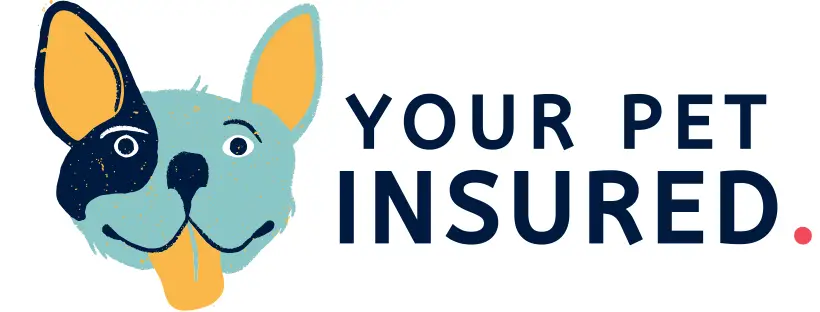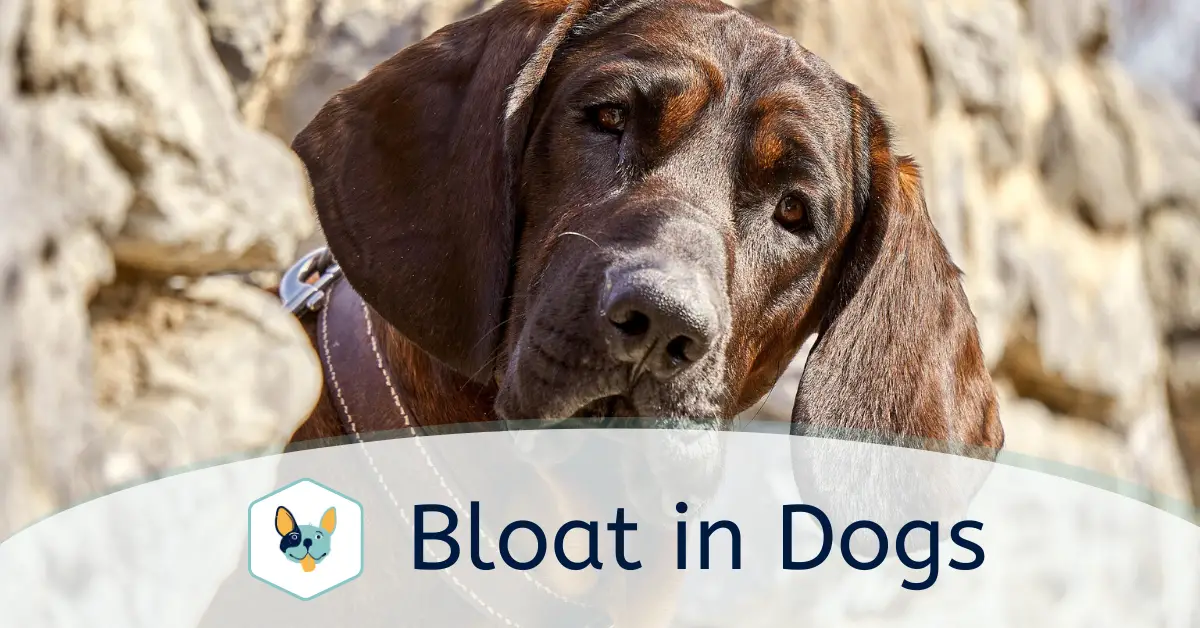Bloat in Dogs
What is Bloat in Dogs?
Bloat, also known as gastric dilatation-volvulus or gastric torsion, is a condition where the stomach fills with gas and twists itself. Bloat in dogs is an emergency that needs veterinary attention. Your dog’s distended stomach obstructs blood flow and can cause your dog to go into shock.
Although a very rare condition, bloat in dogs is the biggest medical emergency that you can have as a pet owner. Bloat comes on very suddenly. If left untreated, bloat can be life-threatening to your dog within a very short space of time.
When a dog gets bloat their stomach fills with gas and twists. This cuts off blood supply to the gut, stopping gas and food from leaving the stomach. It can also make the spleen twist and lose circulation blocking vital veins that supply blood to the heart.
Bloat is a painful condition that can kill a dog in a short space of time without treatment from a vet. It is important for pet owners to know the causes and symptoms of bloat so they can help prevent it.
What Causes Bloat in Dogs?
The exact causes of bloat are not fully understood. Though there is no single definitive cause for bloat, there are a number of factors that are linked to the cause of bloat. These include:
- Hot food
- Cold food
- Excessive food
- Too much exercise
- Too many carbohydrates
- Stress
As you can see there is a wide range of potential causes for bloat so it can be difficult to pinpoint an exact cause. In most cases, it can be narrowed down to nervous dogs and dogs that are fed once daily and eat their food quickly.
Certain Breeds are More at Risk of Bloat than Others.
Certain dog breeds are more at risk of getting bloat than others. Large dog breeds with deep chests and narrow waists are at most at risk of getting bloat.
Dog breeds that are more at risk of bloat include:
- Weimarner
- St. Bernard
- Gordon Setter
- Irish Setter
- Rottweiler
- Poodle
- Chihuahua
What are the Symptoms of Bloat in Dogs?
Symptoms of bloat in dogs can appear very suddenly. Dogs will usually get multiple symptoms if they have bloat. Symptoms include:
Swollen belly – The first sign that your dog might have bloat is that your dog’s stomach will be swollen and hard. This is a result of your dog’s stomach filling with gas.
Retching and trying to vomit – Your dog may try to vomit if their stomach is bloated. As bloat twists the stomach it stops gas and food from leaving the stomach. This will cause your dog to retch but will be unable to vomit.
Drooling – Your dog will drool more than normal.
Pain in stomach when touched – Your dog will have noticeable pain when touched on their stomach.
Signs of distress – Bloat is a very painful condition so if a dog gets bloat they will know that something isn’t right. This may cause them to show signs of distress like heavy panting and restlessness.
First Signs of Bloat in Dogs
Bloat in dogs can come on very suddenly so its important as a dog owner to be able to identify the initial signs of gastric torsion. Acting quickly may save your dogs life. If you notice any of the below symptoms in your dog it is best to contact your vet for a professional opinion and diagnosis.
- Restlessness
- Pacing
- Painful or bloated abdomen
- Distress
- Retching
- Excessive drooling
- Rapid Breathing
How to Prevent Bloat in Dogs?
Although the causes of bloat are not fully understood there are ways to help prevent bloat in dogs.
Eating rapidly is a common cause of bloat. Dividing your dog’s daily food into multiple portions can help eliminate that risk factor. You can also use a special designed slow bowl or feeding toy to slow down your dog’s eating. These will prevent your dog from gulping down the food too quickly.
It is also advised to avoid strenuous exercise directly after your dog eats. It is better to let your dog digest their food before giving them exercise.
Overweight dogs are also more susceptible to bloat than dogs at a healthy weight. So, along with other health benefits it is important for your dog to maintain a healthy weight.
What will a Vet do to Treat Bloat?
There are certain other conditions that present similar symptoms as bloat. Your vet will firstly do a check and possibly a scan to diagnose your dog’s condition. Once diagnosed, your dog will need treatment.
To start the procedure you vet will firstly release the gas build up inside the stomach. This is usually done with a stomach pump, but surgery may be needed. At this stage your vet will also untwist the stomach.
Intravenous fluids will need to be given to your dog to reverse shock and slow down heart rate. Medication will be needed to correct the loss of blood flow to the heart. Your dog will also require painkillers, antibiotics and other medicines.
Damaged tissue may remain in the stomach due to the cut off blood supply. To remove this, further surgery may be required.
Caring for your pet after surgery for bloat may be difficult. There is a risk that dogs that have gotten bloat will have further attacks
Dog Recovery after Gastric Torsion
When caught and treated early, A high percentage of dogs will survive surgery for bloat. In some cases that are not caught early, a portion of the dogs stomach may be found dead as a result of the stomach twisting. If this is the case it can decrease the survival rate as the surgery becomes more complicated. This echos the importance of being aware of the early symptoms of bloat to catch it early before it causes any lasting damage.
Can Dog Bloat Resolve itself?
In general, No. Dog bloat will not resolve itself. If not brought to a vet for medical attention your dogs bloat could be fatal.
Can I Treat Dog Bloat at Home?
Unfortunately there is no safe or effective way to treat dog bloat at home. If your dog is displaying signs of bloat it is important to seek veterinary attention.

